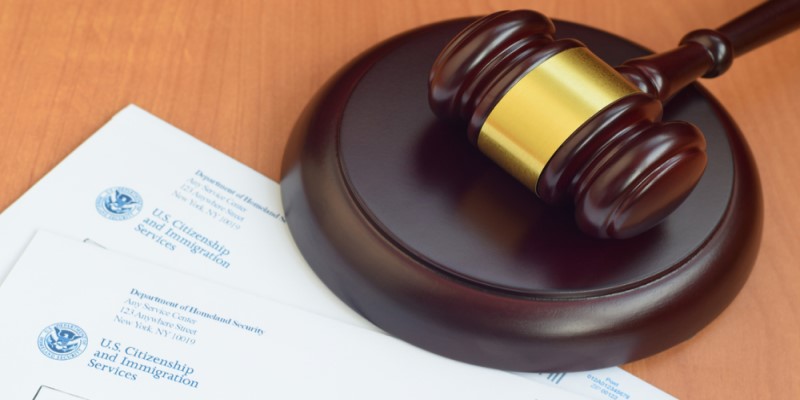
By Anayat Durrani
Chinese investors have filed a lawsuit against the U.S. federal government in the District of Columbia District Court claiming the U.S. Department of Homeland Security (DHS) misinterpreted the EB-5 Reform and Integrity Act of 2022. The suit states the DHS “illogically” obstructs certain foreign investors from acquiring visas by requiring those who invest in infrastructure projects to file a business plan to qualify.
“While the civil action is in its initial stage and could take significant time to resolve, it is critical that the EB-5 RIA is implemented as enacted, which clearly permits review of pre-2022 EB-5 Regional Center projects,” says Raymond G. Lahoud, Member, Norris McLaughlin, P.A. and Chair, Immigration Practice Group.
“The very purpose of the EB-5 RIA was to clear backlogs, and not to expedite immigration of foreign investors to the United States, simply because they waited until 2022, or beyond, to invest,” he adds.
The suit was filed on behalf of the Delaware Valley Regional Center and other plaintiffs. Chinese investors invested in a $240 million project headed by the Southern Pennsylvania Transportation Authority to upgrade Philadelphia’s public transit infrastructure. Delaware Valley Regional Center LLC received government approval for the project in 2017.
The suit claims the DHS is disallowing the investors to bypass visa backlogs sending them into a “never-ending purgatory” in direct disregard to what the RIA lawfully requires.
“Each investor has been sitting in China for over eight years and, absent DHS’s review of the SEPTA Project for EB-5 RIA infrastructure designation, the wait will continue for, at least, another decade,” says Lahoud.
DHS’s perceived misinterpretation of the EB-5 RIA
In implementing the EB-5 RIA, Lahoud says DHS is taking the position that infrastructure determinations can only be conducted when an EB-5 Regional Center project is first submitted for review, and disregards determinations of projects submitted or approved before implementation of the RIA.
“This interpretation keeps pre-2022 foreign national EB-5 infrastructure project investors, who have already waited for nearly two decades, still waiting,” says Lahoud.
The RIA reserves a number of EB-5 visas for those who invest in infrastructure projects. However, the plaintiffs argue that DHS policy has only lengthened the waiting time for investors in addition to the four to five years waiting time that has already passed.
Citizens of countries like China are already subject to per-country caps for work-based visas and endure lengthy visa backlogs of more than 14 years. However, reserved visas for infrastructure projects can cut that wait time.
EB-5 investors reaching the end of their ropes
Compounding investor frustration is that at the close of the second fiscal year, any unused reserved visas are sent back to the backlogged, non-reserved pool of visas. Then there is also the issue of dependents aging out and then being unable to receive a visa.
“Chinese investors find issue in the fact that the government counts all the family members individually, which extends the quota for the green card thus causing additional delays,” says Carolina Kripinski, of counsel, Carrasquillo Law Group.
As a result, she says there is a backlog of 15 years to receive a green card and the children of many EB-5 investors can age out during the long wait.
“The suit looks for the government to count the investor and their family as one to avoid increasing the delays and the children aging out. All this makes good sense, especially under the principles of the EB-5 program,” says Kripinski.
Apart from the investors, the policy has had a negative impact on DVRC’s reputation and the SEPTA fund with many frustrated investors seeking redemption of their investment and withdrawing their I-526 petitions, or leaving petitions already approved.
“DHS’ current interpretation is confusing past infrastructure project investors, holding up ongoing regional center investment projects, creating potential investment cash flow issues in previously approved, yet ongoing projects, and lends to a growing global concern about the EB-5 program’s consistency and stability, which only dissuades potential investors,” says Lahoud.
Attorneys for the plaintiffs were reached out to for comment, to which the Counsel responded “no comment.”
The plaintiffs are represented by Kathleen Roberta Hartnett, Adam M. Katz and Patrick H. Hayden of Cooley LLP, and by Chun Yun Peng and Cletus M. Weber of Peng & Weber PLLC.
DISCLAIMER: The views expressed in this article are solely the views of the author and do not necessarily represent the views of the publisher, its employees. or its affiliates. The information found on this website is intended to be general information; it is not legal or financial advice. Specific legal or financial advice can only be given by a licensed professional with full knowledge of all the facts and circumstances of your particular situation. You should seek consultation with legal, immigration, and financial experts prior to participating in the EB-5 program Posting a question on this website does not create an attorney-client relationship. All questions you post will be available to the public; do not include confidential information in your question.








